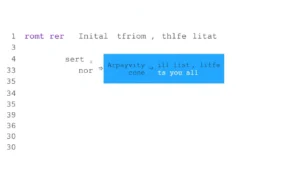Indian Rupee Low: Navigating Trade Tensions and Investor Outflows
- THE MAG POST

- Sep 6
- 3 min read

The Indian rupee has recently found itself under considerable pressure, touching an unprecedented low against the U.S. dollar. This decline isn't occurring in a vacuum; it's a direct response to mounting concerns over potential U.S. tariffs on Indian goods, which have unsettled traders and investors alike. While the Reserve Bank of India has reportedly stepped in to moderate the fall, preventing a sharper slide, the underlying jitteriness in the market persists. This situation underscores the delicate balance of global trade dynamics and their immediate, tangible impact on currency valuations, painting a picture of an economy navigating significant international economic headwinds.
Indian Rupee's Descent: Navigating Economic Headwinds
The Indian rupee has recently experienced a significant downturn, touching an all-time low against the U.S. dollar. This depreciation is largely attributed to heightened anxieties stemming from potential U.S. tariffs on Indian goods. While the Reserve Bank of India (RBI) has reportedly intervened to cushion the fall, market sentiment remains fragile, reflecting broader concerns about international trade relations and their impact on emerging economies.
Global Trade Tensions and Currency Volatility
The specter of increased tariffs looms large over global trade, creating ripples of uncertainty across financial markets. For India, such measures could significantly impact export competitiveness and foreign investment flows, directly influencing the rupee's valuation. The recent dip below the 88.30 mark underscores the currency's sensitivity to geopolitical developments and trade policy shifts.
The Role of Tariff Speculation
Speculation surrounding new U.S. tariffs has acted as a primary catalyst for the rupee's decline. Foreign banks, anticipating a potential weakening of the rupee, have reportedly engaged in substantial dollar buying. This increased demand for dollars, coupled with subdued merchant flows, creates an environment ripe for currency depreciation.
RBI's Interventionary Stance
In response to the sharp fall, the Reserve Bank of India has stepped in to stabilize the rupee. Reports suggest that state-run banks have been actively selling dollars when the USD/INR pair breached critical resistance levels, particularly above 88.30. This intervention aims to curb excessive volatility and prevent a disorderly depreciation of the currency, although its long-term effectiveness depends on broader economic and geopolitical factors.
Forecasting the Rupee's Trajectory
Financial institutions are closely monitoring the situation, with projections indicating potential further weakening of the rupee if trade tensions persist. One analysis suggests the rupee could reach 89 against the dollar by early 2026, contingent on the current tariff structures remaining in place for an extended period before a potential reduction. This forecast highlights the delicate balance between trade policy and currency stability.
Impact of Foreign Portfolio Investor Outflows
Compounding the pressure on the rupee are consistent outflows from Indian equity markets by foreign portfolio investors (FPIs). Significant net sales in September, amounting to billions of dollars, indicate a cautious approach by international investors towards Indian assets. These outflows reduce the overall demand for rupees, further exacerbating the currency's downward trend.
Future Outlook and Economic Resilience
The Indian rupee's recent performance serves as a stark reminder of the interconnectedness of global economies and the profound impact of international trade policies on national currencies. While short-term volatility is expected, India's underlying economic resilience and the RBI's proactive measures will be crucial in navigating these challenging times. Sustained economic reforms and diversification of trade partners could offer long-term stability against external shocks.
Conclusion: A Test of Economic Fortitude
The rupee's record low is a symptom of broader global economic uncertainties, particularly concerning trade relations between major economies. The interplay of tariff speculations, foreign investor sentiment, and central bank interventions dictates the currency's immediate path. A sustained recovery will likely depend on a favorable resolution of trade disputes and a robust domestic economic performance that can attract stable capital inflows.
Aspect | Details |
Current Status | Indian Rupee hit a record low against the U.S. Dollar. |
Trigger Factors | News related to potential U.S. tariffs on India; foreign bank dollar buying. |
Key Levels | Slipped to 88.36, previous low 88.33, last seen at 88.2750. |
Market Intervention | Likely dollar-selling intervention by the Reserve Bank of India (RBI) via state-run banks. |
Merchant Flows | Reportedly muted, skewing activity towards dollar buying. |
Analyst Forecast (MUFG) | Potential weakening to 89 by Q1 2026 if tariffs persist, with eventual reduction. |
Foreign Investor Sentiment | Continued outflows from Indian equities; net sales of $1.4 billion in September, over $16 billion YTD. |
Overall Impact | Currency depreciation due to trade tensions and foreign portfolio investor withdrawals. |
From our network :
Mastering SQL Joins: Correctly Using WHERE Clauses with INNER JOIN
Web Scraping Python: Extracting All Rows from Website Tables
Phoenix Labs Layoffs 2025: Dauntless Fae Farm Future Uncertain After Mass Job Cuts
Astonishing Antarctica Ice Shelf Discovery: Unveiling Hidden Landscapes and Global Impacts






















































Comments